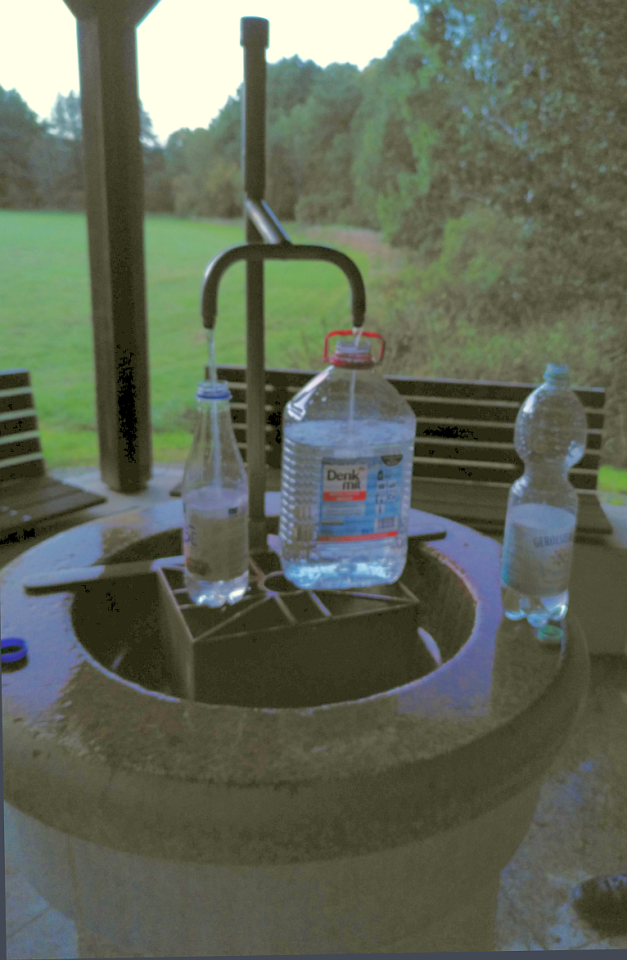Search the Blog
Latest Comments
Collecting Waters...
There's an experiment coming up that I'm really, really excited about - we're going to test the influence of different waters at the Textile Forum. It's a truth universally acknowledged by all dyers that water has quite an influence on the outcome of madder dyeing, and that some are better and others worse for getting a good red colour, but as far as I know, there hasen't been a systematic test of that yet.
Aaaand that's what we're going to change, to my great delight! The plan is to mordant and dye some samples in water from different sources (same water for mordanting and dyeing, since we know from the Pompeii experiment that the influence of the kettle material is present both through mordanting and dyeing, and it adds up, so presumably the bigger difference will be seen when using the same water for both). We'll use the same wool, the same madder (ground madder roots is the plan) in the same amounts, and of course the same amount of alum for mordanting for each of the samples, and heat everything together in a large water bath so it is all as much the same as humanly possible. Reference will be done using de-ionised water so we'll also have a sample where there's really only the madder and the alum interacting with the wool.
And then we will see what the differences are. I've already been collecting some samples of water, including a bottle of tap water from Sibiu airport (my first deed after getting through the security circus), a bottle of tap water from my home town, and a bottle of a spring close to my home town that has a lot of iron in it.
It has a very strong taste - very slightly sour, with a tiny bit of natural carbonisation, and you can taste the iron in it, and I personally find it utterly delicious and love to drink it. I will keep myself from consuming the sample, though, all in the name of science!




